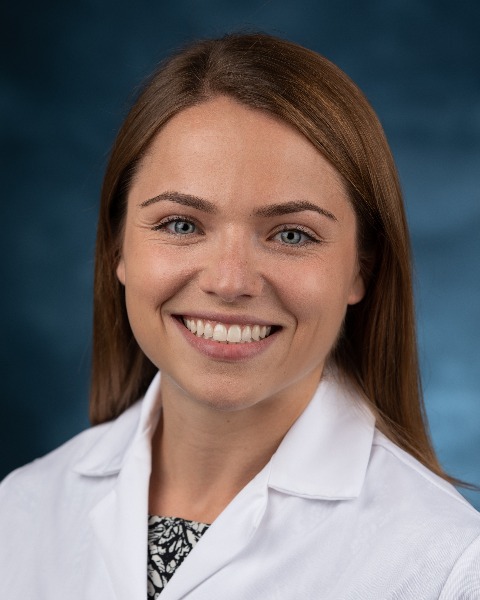Back
Children with Chronic Conditions
Category: Abstract Submission
Children with Chronic Conditions IV
605 - Early Postoperative Urinary Function Following Cloaca Repair: An Initial Report of a Prospective Registry Focused on Longitudinal Voiding Outcomes Among Patients with Cloaca
Monday, April 25, 2022
3:30 PM – 6:00 PM US MT
Poster Number: 605
Publication Number: 605.404
Publication Number: 605.404
Meghan F. Davis, Medstar Georgetown University Hospital, Washington, DC, United States; Briana Goddard, George Washington University School of Medicine and Health Sciences, Washington, DC, United States; Teresa L. Russell, Children's National Hospital, Washington, DC, United States; Christina P. Ho, Children's National Health System, Washington, DC, United States; Hans G. Pohl, Children's National Health System, Washington, DC, United States; Marc A. Levitt, Children's National Health System, Washington, DC, United States; Andrea Badillo, Children's National Hospital, Washington, DC, United States; Christina Feng, Children's National Health System, Washington, DC, United States; Briony K. Varda, Children's National Health System, Washington, DC, United States

Meghan F. Davis, MD, MPH
Resident Physician
Medstar Georgetown University Hospital
Washington, District of Columbia, United States
Presenting Author(s)
Background: Urinary function has been described among patients with cloaca, though not followed prospectively given the rarity of the condition.
Objective: We aimed to characterize perioperative voiding function among after primary repair of 13 cloaca patients at a high-volume single institution between 2020-2021 and then track it longitudinally over time.
Design/Methods: A prospective institutional registry was established to collect patient and clinical variables, surgical details, postoperative complications, and urinary function outcomes over time. Voiding function (including post void residuals (PVR) by urodynamics and/or suprapubic tube clamp trials) and the need for clean intermittent catheterization (CIC) following repair were assessed at each follow-up visit. PVR < 30% expected bladder capacity were considered “low”.
Results: Fourteen cases were performed. One patient was excluded for anuria. Among the 13 patients, 69% had a moderate cloaca and 23% complex; 62% had vesicoureteral reflux (VUR). A majority had good sacral ratios (62%), while 46% had spinal cord anomalies. Median age at repair was 8 months (range 5 – 33). Approximately half had urogenital separation (54%; UGS) and half total urogenital mobilization (46%; TUM). One UGS patient with a spinal anomaly and high-grade VUR underwent concomitant vesicostomy. Median follow-up was 9 months (range 3-14). Four patients had 30-day complications, half were urologic: a febrile urinary tract infection and transient hydroureteronephrosis resolved after a period of ureteral stenting. At 3 months postoperatively, 23% voided with minimal PVR, 15% voided with low PVR, 38% voided with high PVR requiring CIC, and 23% did not void and were on CIC or had a vesicostomy. At last follow up, 46% voided with minimal PVR, 8% voided with low PVR, 23% voided with high PVR requiring CIC and 23% did not void. Thus, the proportion of patients voiding with complete emptying doubled within the first year. Among patients voiding at last visit, 4 had undergone TUM and 2 UGS and half had pre-existing spinal cord anomalies. Conclusion(s): In this prospective cohort, incomplete bladder emptying affected a majority of patients after primary cloacal repair, however a subset of cloaca patients recovered complete bladder emptying within the first year. Longitudinal, prospective follow up is key to understanding long-term voiding patterns after primary cloaca repair.
Meghan Davis CVDavis_Meghan_CV_1722.pdf
Objective: We aimed to characterize perioperative voiding function among after primary repair of 13 cloaca patients at a high-volume single institution between 2020-2021 and then track it longitudinally over time.
Design/Methods: A prospective institutional registry was established to collect patient and clinical variables, surgical details, postoperative complications, and urinary function outcomes over time. Voiding function (including post void residuals (PVR) by urodynamics and/or suprapubic tube clamp trials) and the need for clean intermittent catheterization (CIC) following repair were assessed at each follow-up visit. PVR < 30% expected bladder capacity were considered “low”.
Results: Fourteen cases were performed. One patient was excluded for anuria. Among the 13 patients, 69% had a moderate cloaca and 23% complex; 62% had vesicoureteral reflux (VUR). A majority had good sacral ratios (62%), while 46% had spinal cord anomalies. Median age at repair was 8 months (range 5 – 33). Approximately half had urogenital separation (54%; UGS) and half total urogenital mobilization (46%; TUM). One UGS patient with a spinal anomaly and high-grade VUR underwent concomitant vesicostomy. Median follow-up was 9 months (range 3-14). Four patients had 30-day complications, half were urologic: a febrile urinary tract infection and transient hydroureteronephrosis resolved after a period of ureteral stenting. At 3 months postoperatively, 23% voided with minimal PVR, 15% voided with low PVR, 38% voided with high PVR requiring CIC, and 23% did not void and were on CIC or had a vesicostomy. At last follow up, 46% voided with minimal PVR, 8% voided with low PVR, 23% voided with high PVR requiring CIC and 23% did not void. Thus, the proportion of patients voiding with complete emptying doubled within the first year. Among patients voiding at last visit, 4 had undergone TUM and 2 UGS and half had pre-existing spinal cord anomalies. Conclusion(s): In this prospective cohort, incomplete bladder emptying affected a majority of patients after primary cloacal repair, however a subset of cloaca patients recovered complete bladder emptying within the first year. Longitudinal, prospective follow up is key to understanding long-term voiding patterns after primary cloaca repair.
Meghan Davis CVDavis_Meghan_CV_1722.pdf
